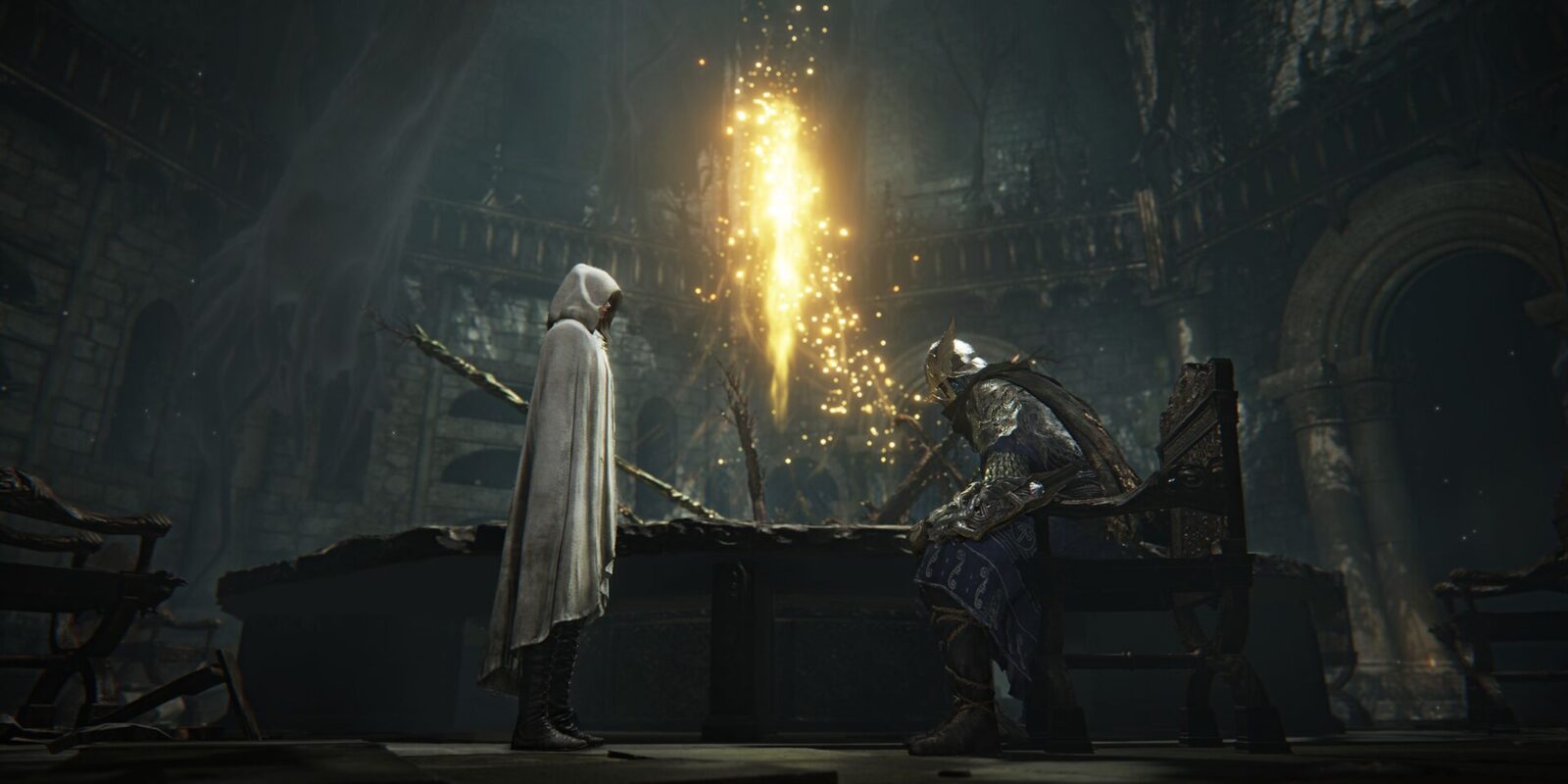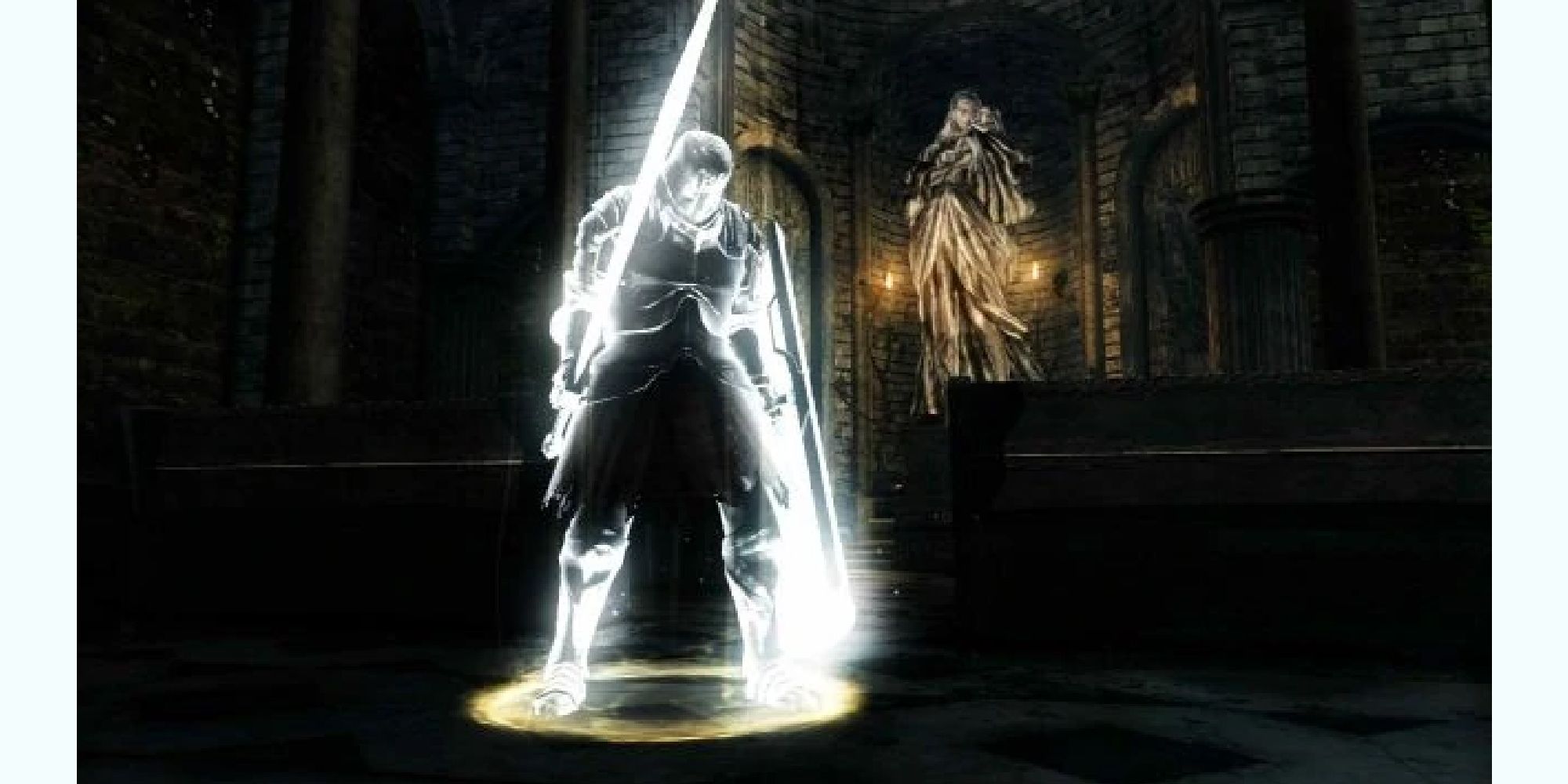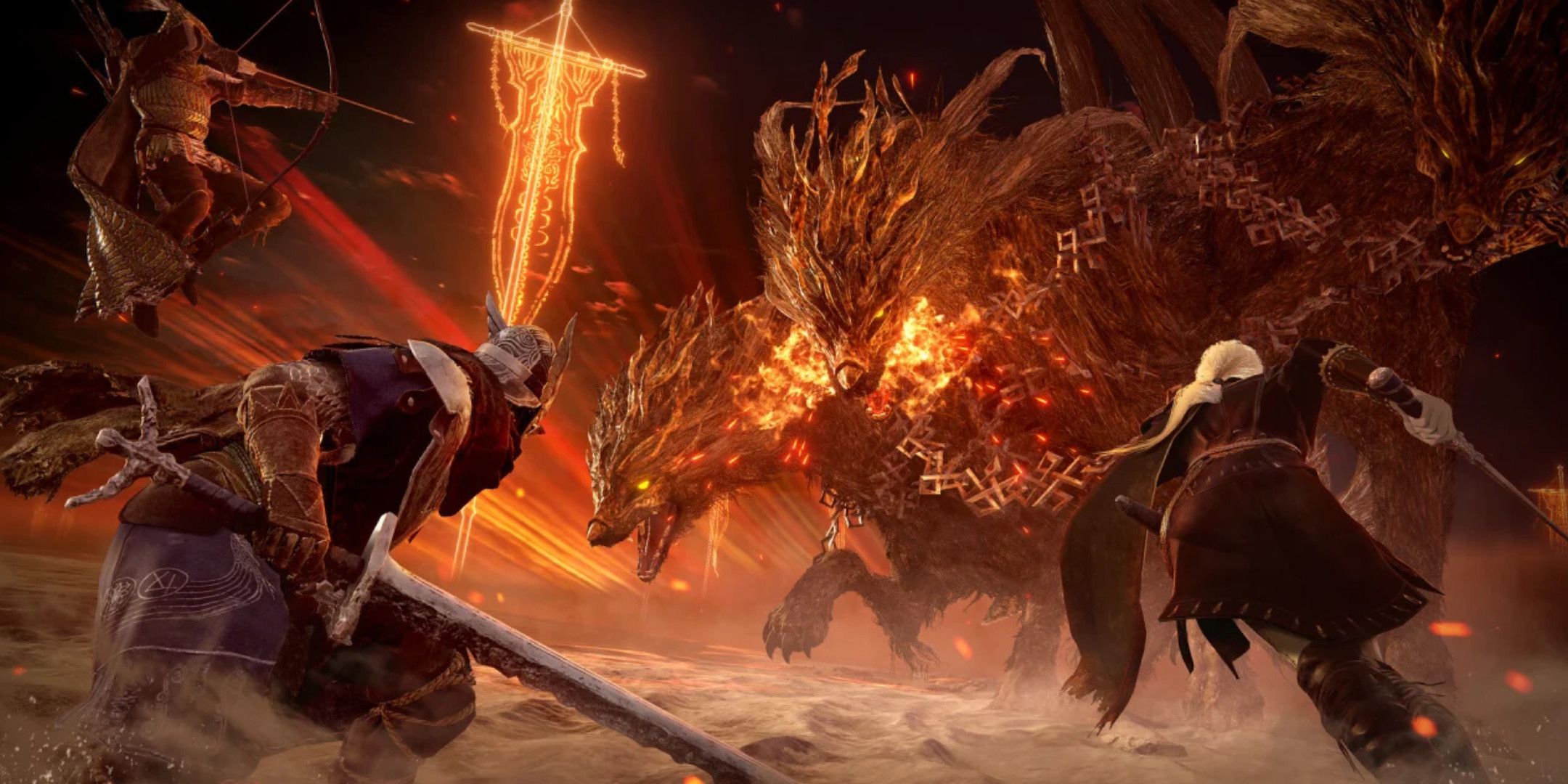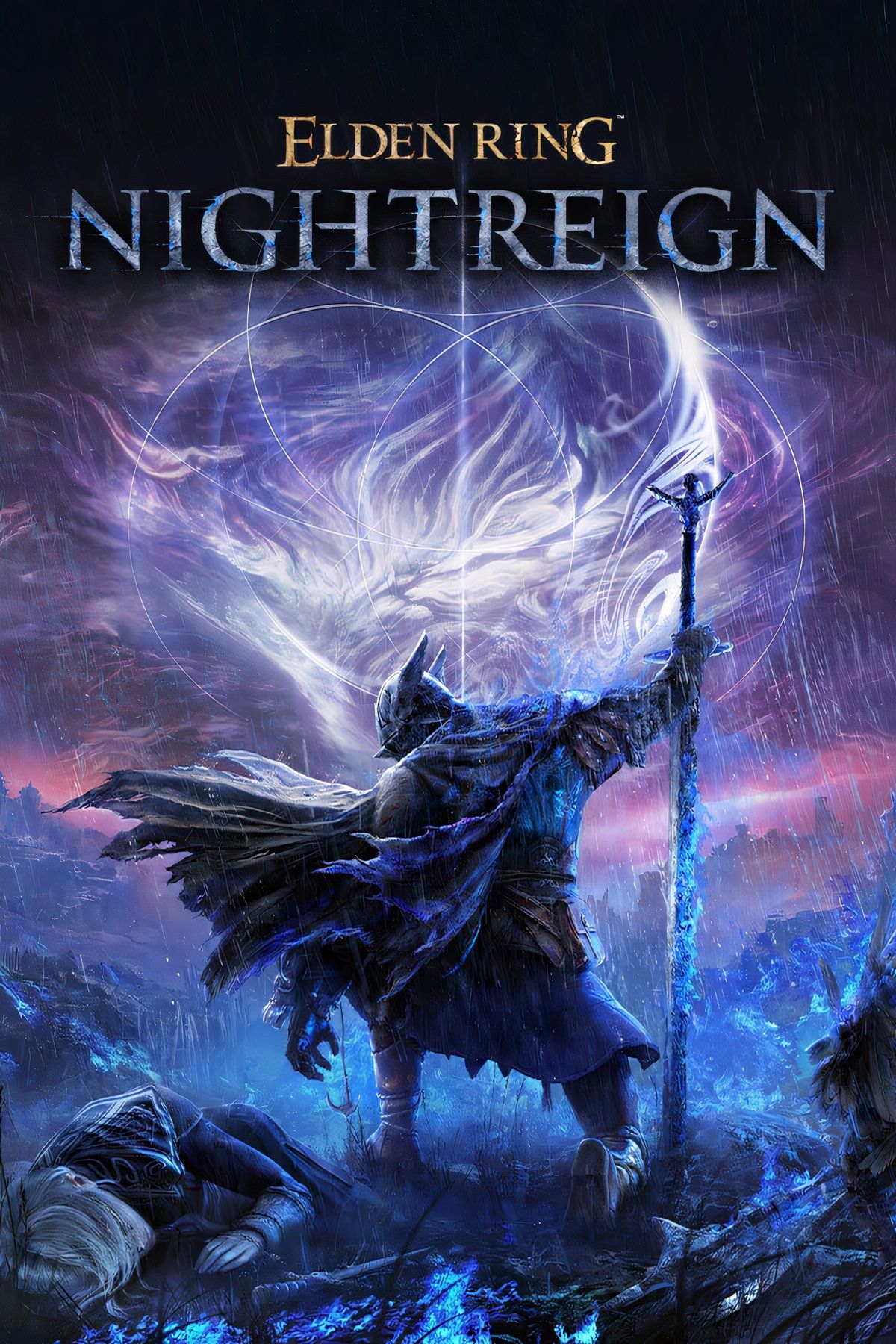“The flow of time itself is convoluted; with heroes centuries old phasing in and out. The very fabric wavers, and relations shift and obscure. There’s no telling how much longer your world and mine will remain in contact. But use this to summon one another as spirits, cross the gaps between the worlds, and engage in jolly co-operation!”
That’s how co-op was introduced in Dark Souls, a cryptic mix of game mechanics and lore spooled out of a random NPC who slams a hefty soapstone into your hands and sends you on your merry way. It’s thankfully spelt out more clearly in the item description: “Online play item. Leave summon sign. Be summoned to another world as a phantom through your sign, and defeat the area boss to acquire humanity.”
Co-op and PvP have always been ingrained into the worldbuilding of Soulsborne games, “Time itself is convoluted” even became the bedrock of Dark Souls 3. But that leaves the more obvious explanations hidden away, which is hardly ideal when so many of these multiplayer elements are purposefully made opaque as part of the soulslike loop, completely forgoing genre tradition.
Unlike most other games, cooperation is punished. If you want to enlist help, you risk being ambushed by other players. But with each passing instalment, this risk and reward has been watered down.
In Dark Souls, you use humanity at a bonfire to turn human so that you can summon other players, but this also means you can be invaded at any point during the runback to the boss fog. In later games, you can pop the equivalent human effigy, ember, or furcalling finger remedy right at the boss fog and completely avoid an invasion. The mechanics are far less punishing than they once were, making them feel increasingly like a hangover of a more cynical FromSoftware. That’s why Elden Ring Nightreign is such a breath of fresh air.
Soulslike Co-Op Is Far Too Confusing
Nightreign is a multiplayer roguelite spin-off. You can’t play it solo unless you’re offline, only in groups of three. Partners are found simply by matchmaking at the Roundtable Hold, the same hub from Elden Ring. It’s a far more intuitive system than past games, where, as Solaire so obtusely put it, co-op is initiated by interacting with a fleeting summon sign. But Solaire neglected to mention the unending mountain of rules that change with each game.
FromSoftware didn’t explain these additional rules. The community had to puzzle together different multiplayer brackets and create calculators for people to play with their friends.
It was an interesting experiment to combine multiplayer systems with worldbuilding, making the interactivity between players more organic in a non-MMO setting, but FromSoftware never found a way to make it feel natural for newcomers. Until Nightreign.
What Nightreign Gets Right
You’re dropped into Limveld on spectral hawks, side-by-side with two Tarnished compadres. It’s less daunting stepping foot into this unknown world with allies by your side, but bosses have advanced new movesets to accommodate the increased number of players, making every fight even more gruelling. But if you go down, you don’t fade out of existence and awaken in your own world. Instead, teammates can revive you by attacking you.
That means you can be revived at range, or they can damage the boss while also working to get you back on your feet. You become another target, another cog adding complexity to each duel. More so than even summon signs and opaque instructions, it feels FromSoft. And true to the systems of old, it’s punishing, even if it’s far more intuitive. Every time you go down, it takes more damage to get you back up as another health bar (upward of three) is added. And if the timer ticks to zero, you respawn one level weaker.
Newcomers won’t be scared away by these systems, because they’re familiar. But the soulslike mythos of trial and error and the triumph of overcoming insurmountable odds are still ingrained into the mechanics. It’s the perfect blend of two distinct approaches and finally pushes past the stubborn, archaic methods that the soulslike series has employed since Demon’s Souls. It was novel once, but the genre has grown and its charm is wearing thin.
Nightreign risks being the exception to the rule, because it’s an unorthodox spin-off, but director Junya Ishizaki has found a brilliant solution to a system that FromSoftware has spent the better part of a decade tinkering with. To leave it behind now and return to tradition would be a huge step back for what is easily the biggest leap forward since adding a dedicated jump button. Yes, that took a decade too.

















Leave a Reply